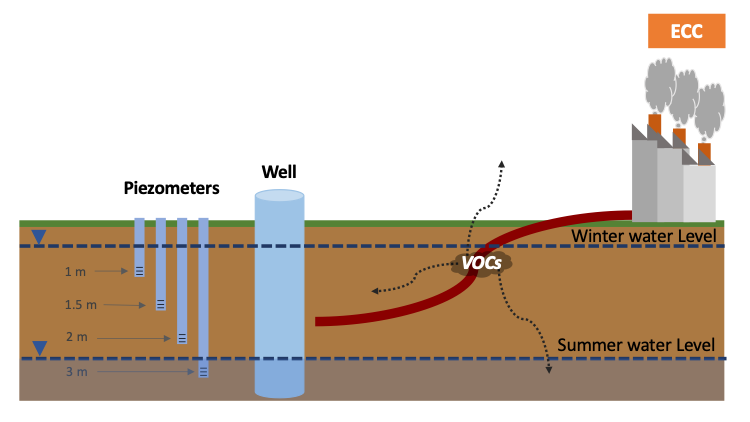SSTemWater – Sources and Short-term TEMporal evolution of GroundWATER contamination in Estarreja region
SSTemWater - Sources et évolution temporelle à court terme de la contamination des eaux souterraines dans la région de l'Estarreja
2020
OHM Project
Estarreja OHMi

Leader : Cachada Anabela
Project leader’s laboratory :
Full address of laboratory :
Coauthor(s) : Ruth Pereira, Nuno Durães, Carla Patinha
Keywords :
Volatile Organic Contaminants
Potentially Toxic Elements
Potential risks
Soil saturated layer
Contamination hotspots
Disciplines :
Chimie
Ecologie
Geologie
Sante publique
Abstract :
The Estarreja Chemical Complex (ECC), composed essentially by chemical plants that produce, among others, aniline, nitrobenzene, PVC, isocyanide polymers of aromatic base and polystyrene polymers for thermal isolation, has been pointed as a major threat to the environment and to public health in the region. For decades, the different ECC industries disposed off solid wastes directly on the permeable sands without containment, and untreated liquid effluents were discharged directly on streams connected to the coastal lagoon. Due to the geological features (unconsolidated detritic sedimentary rocks) of this region, that allows the contaminant’s dispersion, there is a high vulnerability of the aquifer to environmental hazards. Although waste management practices improved significantly in the last years, there are still signs of groundwater contamination. Indeed, previous studies indicate that the ECC is a vulnerable area due to the presence of multiple pressures (agriculture, industry and urban activities) and hotspots of organic and inorganic contaminants were already identified. However, there is a space-temporal variation of these hotspots that was not yet fully understood and it is not clear yet how contaminants are reaching the aquifer. Thus, this project aims at understand the dynamics behind the groundwater contamination and the processes that result in specific hotspots, and consequently identify sources and pathways of contaminants. Moreover, since some of the contaminants previously identified are classified as carcinogenic and highly toxic, the potential risks to the environment and human health will be also evaluated.

